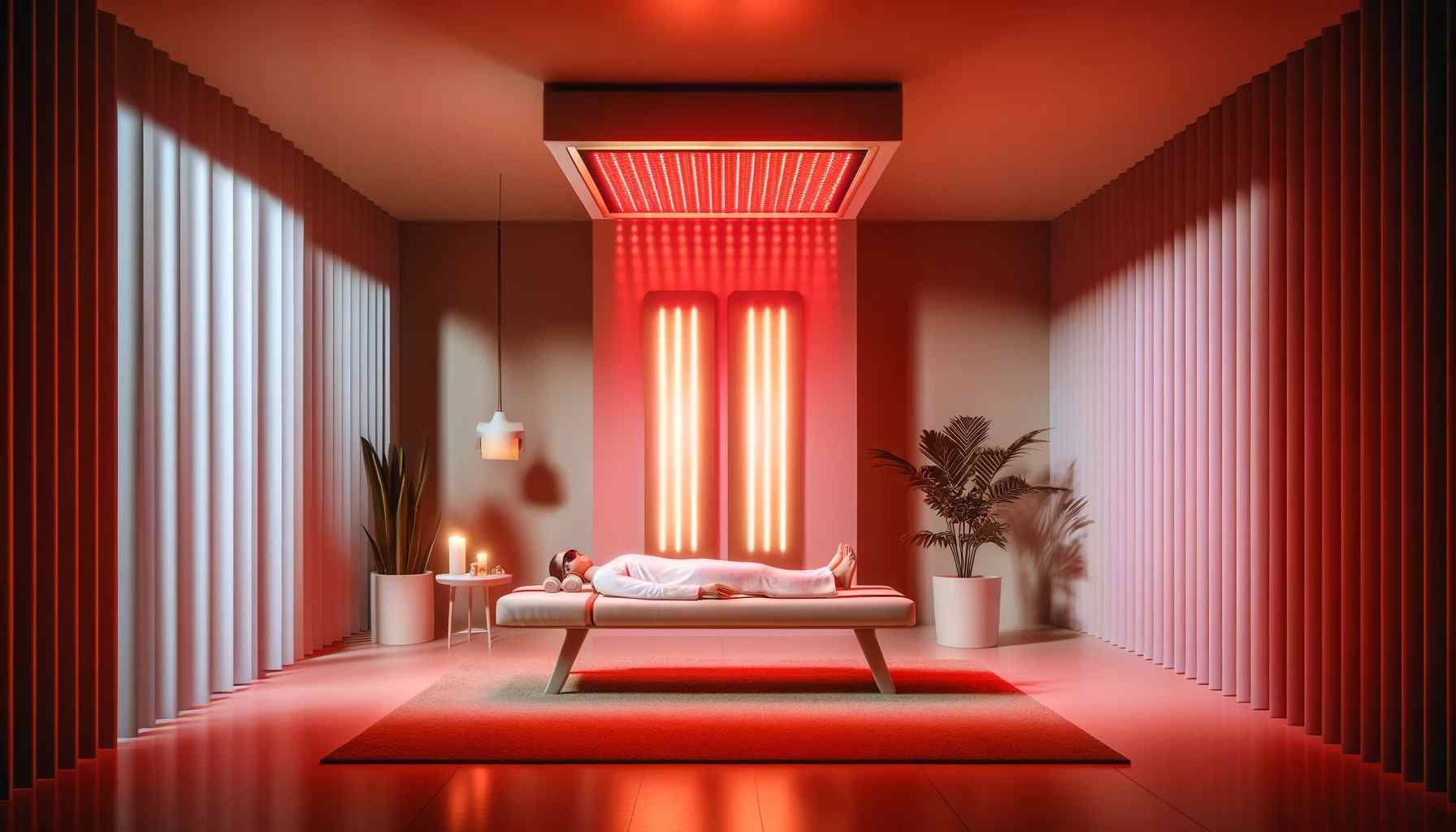The Pros and Cons of Red Light Therapy: Everything You Need to Know

Red light therapy has gained popularity in recent years for its potential benefits in various health and beauty applications. From skincare to pain relief, this non-invasive treatment has been touted as an effective and safe option.
However, like any other therapy, it also has its drawbacks. In this article, we will explore the pros and cons of red light therapy so you can make an informed decision about whether it's right for you.
What is red-light therapy?
Red light therapy, also known as low-level light therapy (LLLT), is a therapeutic technique that uses red and near-infrared light to stimulate various biological processes in the body. The red and near-infrared wavelengths penetrate the skin and are absorbed by cells, which then produce more energy and promote healing and rejuvenation.
How does red light therapy work?
Red light therapy works by stimulating the mitochondria, the powerhouses of our cells, to produce more ATP (adenosine triphosphate), the energy currency of our bodies. This increase in energy production helps cells function optimally and promotes various healing processes.
Additionally, red light therapy has been shown to increase blood circulation and the formation of new blood vessels, which can improve oxygen and nutrient delivery to tissues. It also reduces inflammation and oxidative stress, which are key factors in many health conditions.

The pros of red light therapy
Red light therapy offers several potential benefits that have made it a popular choice among individuals seeking alternative treatment options. Here are some of the pros of red light therapy:
Improved skin health
One of the most well-known benefits of red light therapy is its positive effects on the skin. It can help reduce the signs of aging, such as wrinkles and fine lines, by stimulating the production of collagen and elastin, which are essential proteins for maintaining skin elasticity.
Red light therapy also improves the overall texture of the skin, reduces inflammation, and promotes wound healing.
Pain relief
Red light therapy has been found to be effective in relieving pain associated with various conditions, such as arthritis, fibromyalgia, and muscle soreness. It works by reducing inflammation, stimulating the release of endorphins, and improving blood circulation, all of which contribute to pain relief.
Muscle recovery
Athletes and fitness enthusiasts often turn to red light therapy to aid in muscle recovery. The therapy helps reduce muscle fatigue, accelerate the healing of micro-tears in the muscles, and promote the growth of new muscle tissue.
It can also alleviate muscle stiffness and improve range of motion.
The cons of red light therapy
While red light therapy offers numerous potential benefits, there are also a few cons to consider before starting treatment. Here are some of the cons of red light therapy:
Time commitment
Red light therapy requires regular and consistent treatments to achieve optimal results. Depending on the condition being treated, sessions can range from a few minutes to several hours per week.
This time commitment may not be feasible for everyone, especially those with a busy schedule.
Cost
Investing in red light therapy devices or visiting a professional clinic can be costly. The upfront cost of purchasing a quality device can range from a few hundred to several thousand dollars, depending on the specifications and features.
Additionally, professional clinic sessions can also add up over time, especially if multiple sessions are required.
Limited scientific evidence
While there is promising research on the benefits of red light therapy, the scientific evidence is still somewhat limited. Many studies have been conducted on a small scale, and more research is needed to fully understand the long-term effects and potential risks associated with this therapy.
It's important to consult with a healthcare professional before starting red light therapy, especially if you have any underlying health conditions.
Red light therapy for skincare
Red light therapy has gained popularity as a non-invasive and natural method for improving skin health and appearance. It can be used to treat various skin conditions, including acne, rosacea, and eczema.
By stimulating collagen production and reducing inflammation, red light therapy can help clear blemishes, even out skin tone, and promote a youthful complexion.
Red light therapy for pain relief
Chronic pain can significantly impact one's quality of life. Red light therapy offers a drug-free and non-invasive approach to managing pain.
It has been found to be effective in reducing pain associated with conditions such as arthritis, back pain, and neuropathy. By improving blood circulation, reducing inflammation, and stimulating the release of endorphins, red light therapy provides natural pain relief.
Red light therapy for muscle recovery
Intense workouts and physical activities can lead to muscle soreness and fatigue. Red light therapy can help speed up the recovery process by reducing inflammation, promoting the growth of new muscle tissue, and improving overall muscle function.
Athletes and fitness enthusiasts can benefit from incorporating red light therapy into their recovery routine to enhance performance and prevent injuries.
Red light therapy for hair growth
Hair loss can be a distressing experience for many individuals. Red light therapy has shown promise in promoting hair growth and preventing further hair loss.
It works by stimulating the hair follicles, increasing blood circulation to the scalp, and promoting the production of proteins essential for hair growth. Red light therapy can be used as a standalone treatment or in combination with other hair loss therapies.
Red light therapy devices and products
There are various red light therapy devices and products available in the market, ranging from handheld devices to full-body panels. When choosing a device, it's important to consider factors such as the wavelength, power output, and treatment area coverage.
It's also essential to follow the manufacturer's instructions and safety guidelines to ensure the best results and minimize the risk of adverse effects.
Wrapping Up
Red light therapy offers a range of potential benefits, from improving skin health to relieving pain and promoting hair growth. However, it's important to weigh the pros and cons before incorporating it into your wellness routine.
While red light therapy is generally considered safe, it's always best to consult with a healthcare professional, especially if you have any underlying health conditions. With the right device and proper treatment regimen, red light therapy can be an effective and convenient option for enhancing your overall well-being.
FAQs
What is red light therapy?
Red light therapy, also known as low-level light therapy (LLLT), uses specific wavelengths of red and near-infrared light to stimulate biological processes in the body, enhancing cell function and promoting healing.
How does red light therapy aid in skin health and pain relief?
Red light therapy boosts ATP production in mitochondria, improving cell function and energy. It increases blood circulation and reduces inflammation, helping alleviate pain and enhancing skin rejuvenation by promoting collagen production.
What are the benefits of using red light therapy for muscle recovery?
Athletes use red light therapy to accelerate muscle recovery by reducing inflammation and muscle fatigue. It promotes the healing of muscle tissues and improves the overall recovery process after intense physical activities.
Are there any disadvantages to using red light therapy?
The main drawbacks include the time commitment for regular sessions, the cost of devices or professional treatments, and limited conclusive scientific evidence on its long-term effectiveness and potential risks.
Is red light therapy a suitable option for everyone?
While generally safe, it's important to consult a healthcare professional before starting red light therapy, especially for individuals with underlying health conditions or sensitivities to light.
Related Studies
Title: Red Light for Photobiomodulation Therapy: Energy Applications
- DOI: 10.3390/app12010436
- Link: https://www.mdpi.com/2076-3417/12/1/436
Title: Photobiomodulation with red light mitigates Alzheimer's disease-related pathology in transgenic mice
- DOI: 10.1002/jbio.201900251
- Link: https://onlinelibrary.wiley.com/doi/10.1002/jbio.201900251
Title: Red and Near-Infrared Photobiomodulation: A Potential Approach to Modulate Oxidative Stress in Severe Diabetic Retinopathy
- DOI: 10.1016/j.tiv.2023.105612
- Link: https://www.sciencedirect.com/science/article/pii/S0887233323000390
Title: A Systematic Review of the Effects of Red Light Therapy on Skin Aging and Rejuvenation
- DOI: 10.1089/photob.2022.0012
- Link: https://www.liebertpub.com/doi/10.1089/photob.2022.0012
Title: Red Light Therapy for Androgenetic Alopecia: Critical Appraisal of the Evidence and Future Perspectives
- DOI: 10.1089/photob.2021.0081
- Link: https://www.liebertpub.com/doi/10.1089/photob.2021.0081
